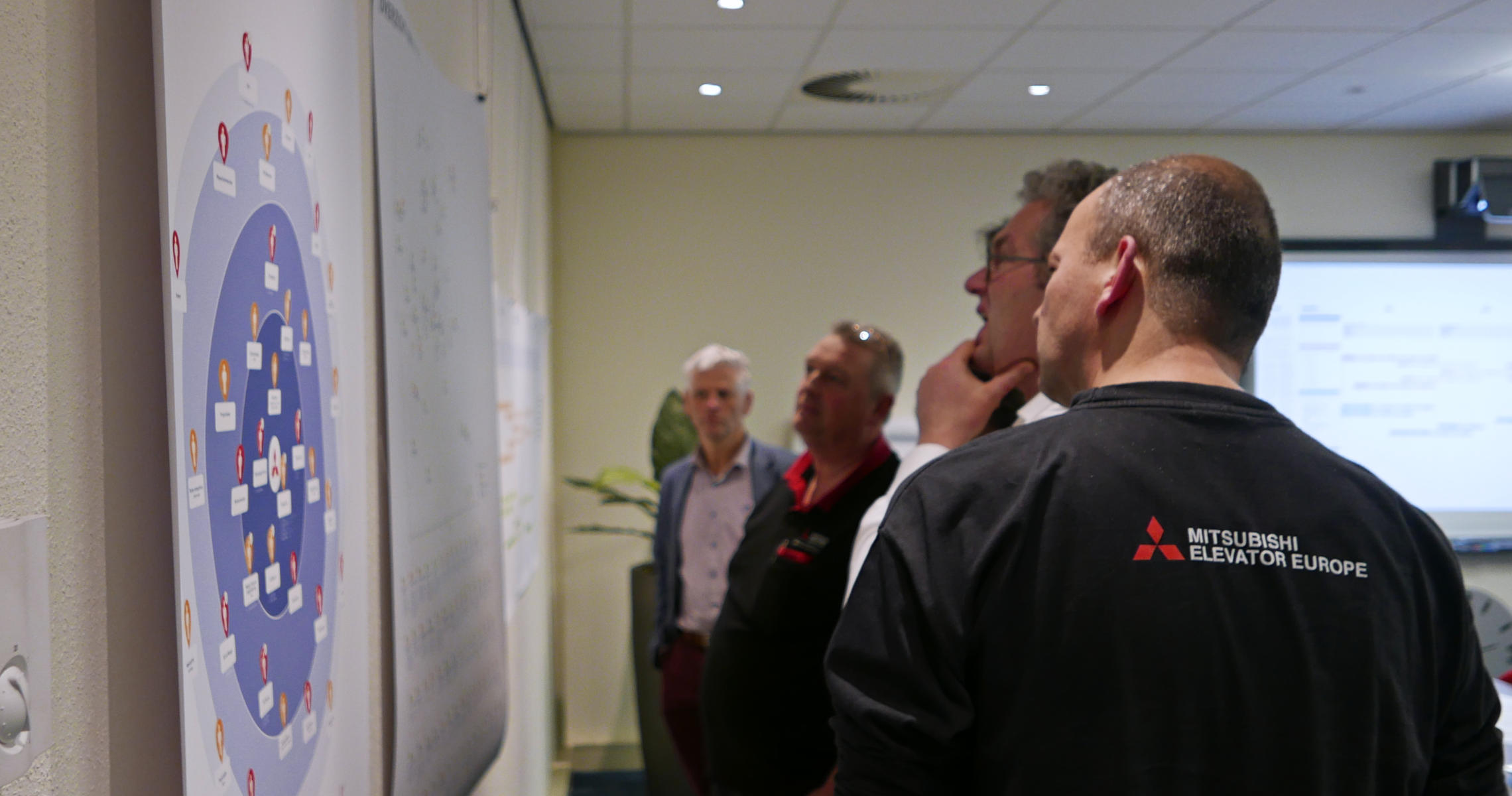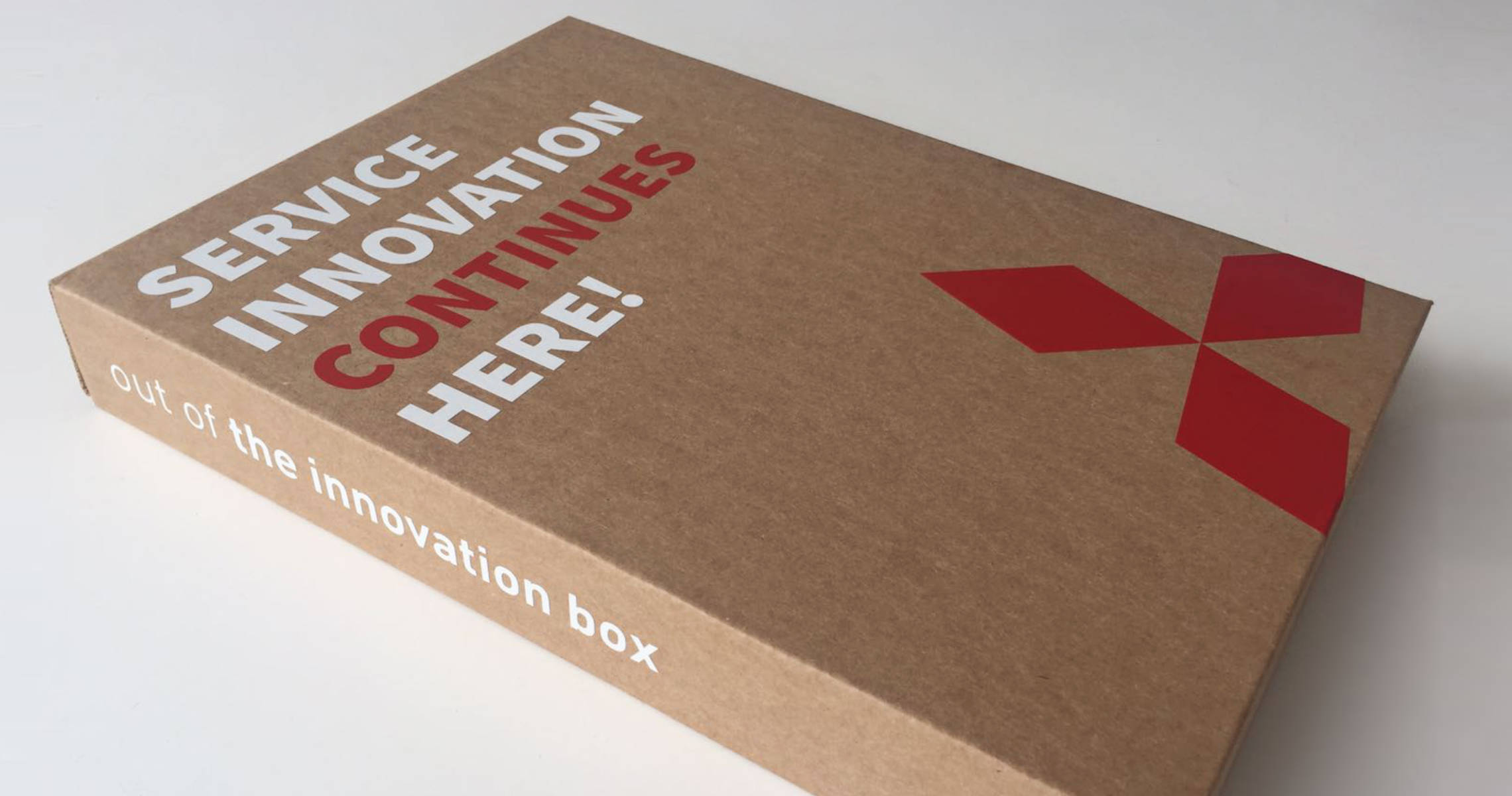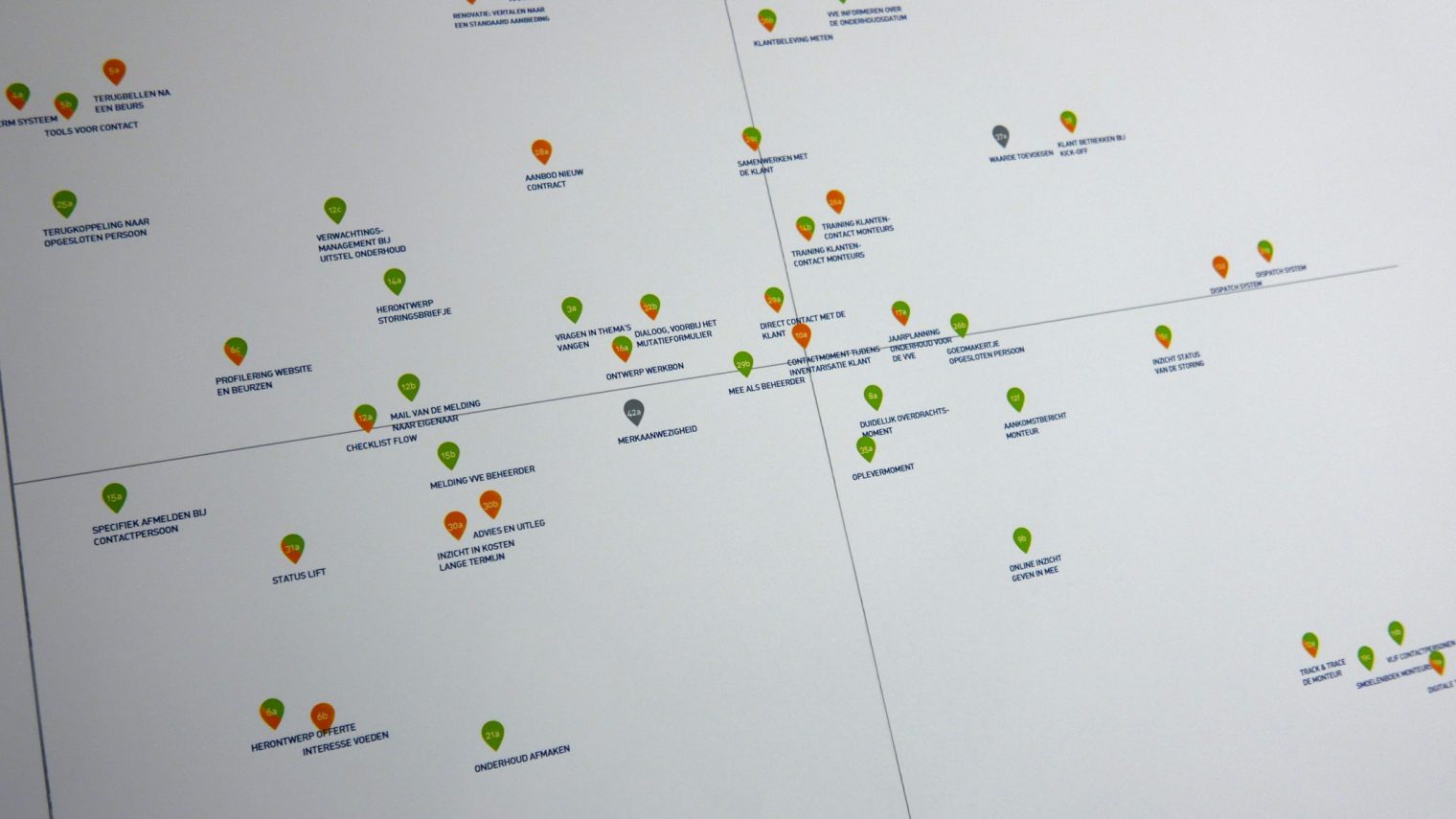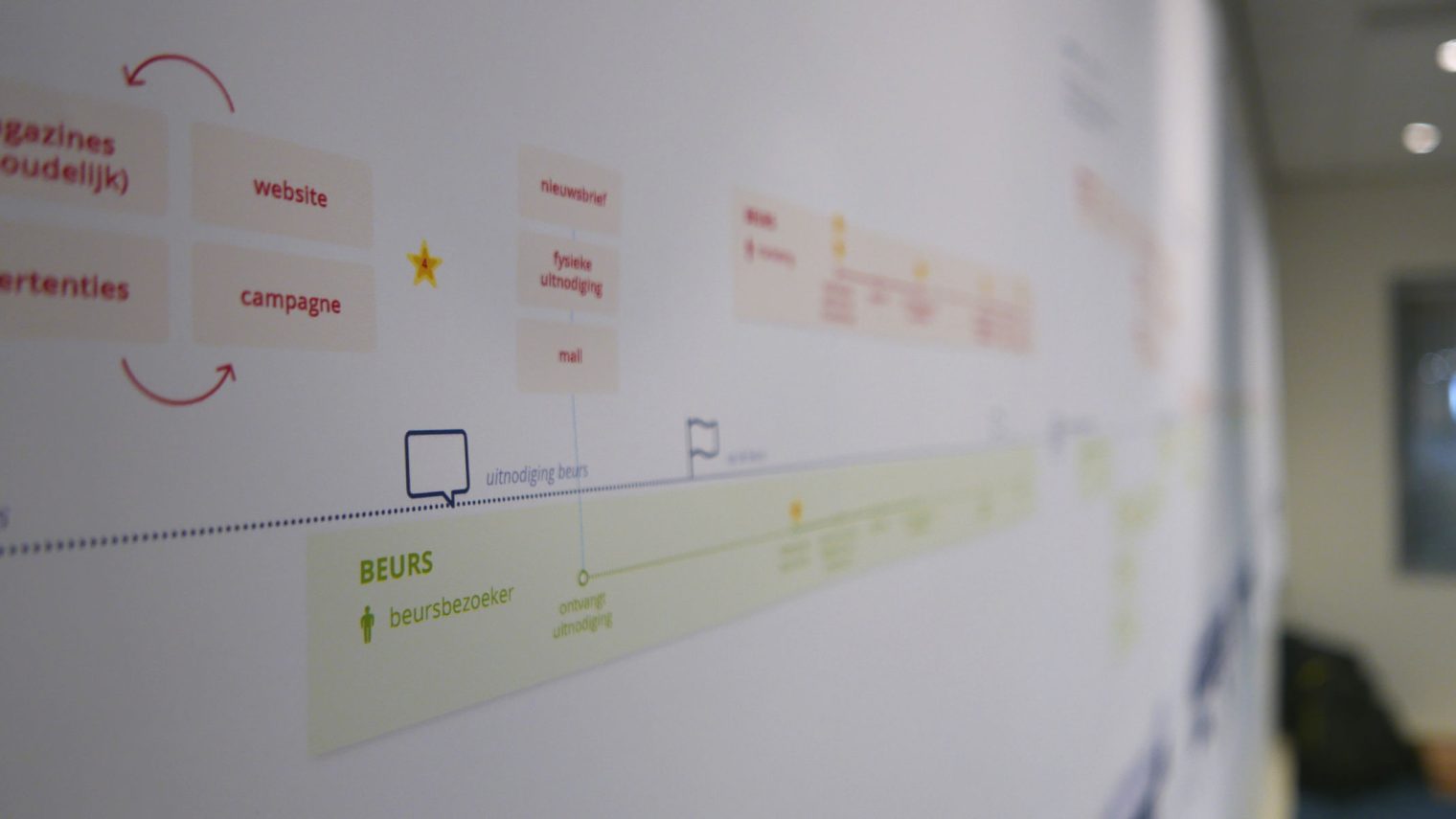Investing in customer experience
How do you design a better customer experience? For Mitsubishi Elevator Europe, we took a close look at the ‘Gap’ between current and desired services.
For more than 65 years, Mitsubishi Elevator Europe (MEE) has been manufacturing high-quality lifts. In its own words, it is the ‘Rolls-Royce’ among lifts. But competition in lift country is growing. Besides the product, how can MEE differentiate itself in service? Asked to help them achieve this ambition: “In three years, we are a service-oriented company where people inside and outside the organisation are central.”
• Veenendaal, The Netherlands
• 2017
The real customer
For MEE, the paying customer is not the only customer. A property owner buys the lift, but a hotel guest gets stuck in it on an unlucky day. When we talk about users, who are we talking about? That question must be answered before we can talk about service improvement points. Our approach: a customer journey map of the lift. From production to replacement. A lift lifetime.

Out and about with the mechanic
To analyse the gap between current and desired services, we map customer journeys. We visualise who deals with a lift and when. From architect to installer. From hospital to senior flats. The insights come from conversations with people. We walk along with technicians, talk to residents, empathise and delve deeper.
In addition to customer journeys, research provides immediate points for improvement. 20 actions to change a lift light? It can be done faster. A crumpled ‘out of order’ note? Could be friendlier. And rescuing a hotel guest from a lift? That’s the chance to show what you have to offer as a service-oriented organisation!
• Interviews
• Prototyping
• Customer journey mapping
• Workshops
• Co-creation

Getting to know customers
Mitsubishi Elevator Europe learned in what concrete ways it can improve its services. MEE employees are now better able to empathise with their end-user. They see opportunities for improvements that contribute to a more pleasant customer experience and make their colleagues’ work easier.
A service-oriented organisation is about end-users as well as employees.
the service
of people

